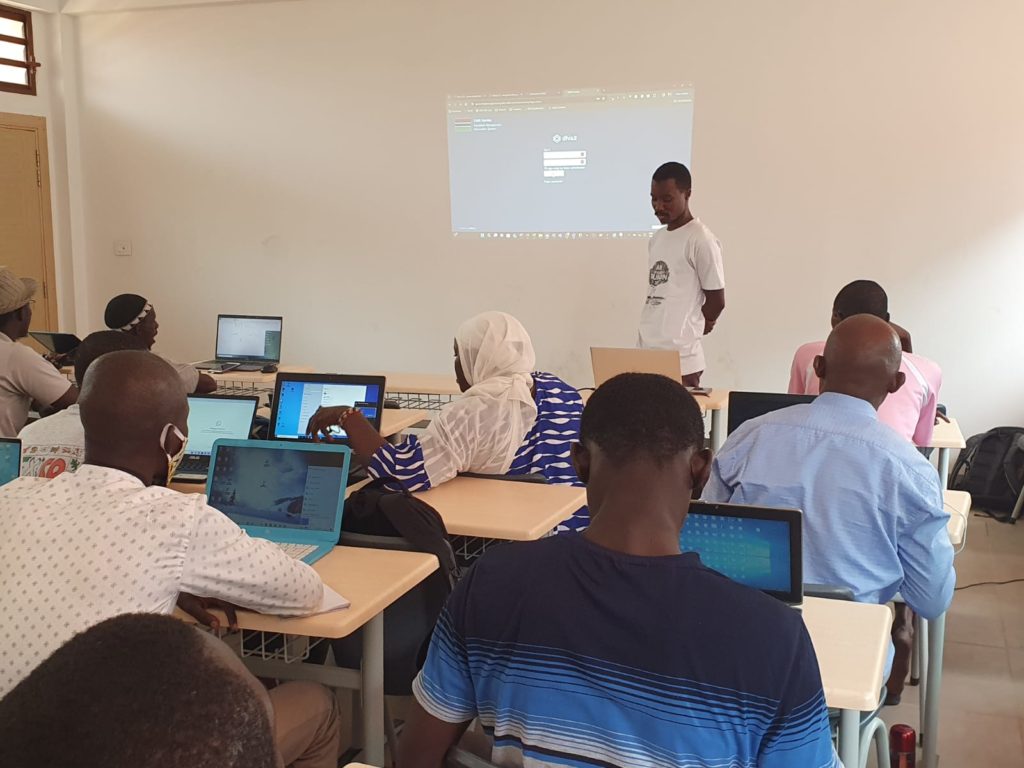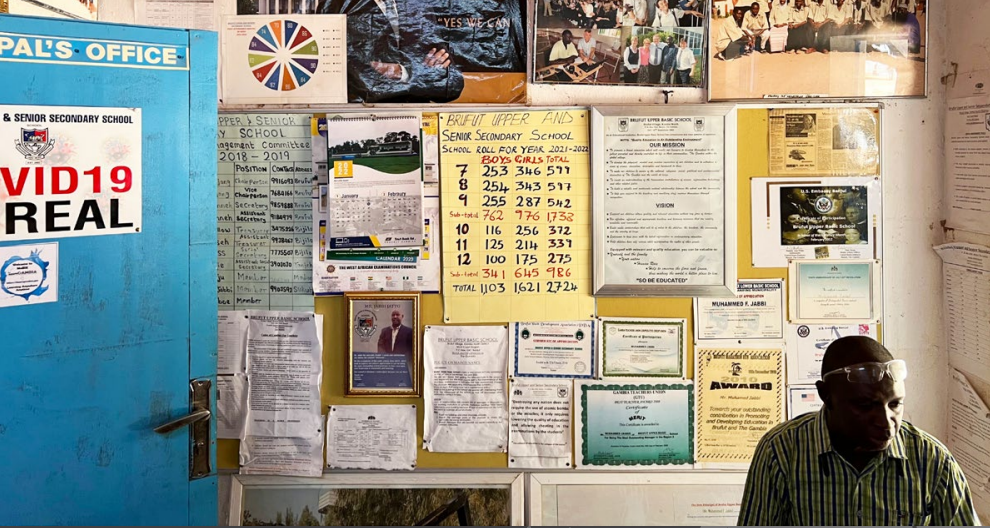The government of Gambia implements a DHIS2-based Education Management Information System to guide planning and direct intervention in basic and secondary education.
In the Gambia, the government has embarked on a mission to improve the quality of education by focusing on basic and secondary education. This is from a backdrop of low enrollment and high drop-out rates. Starting in 2018, the Ministry of Basic and Secondary Education (MoBSE) implemented an Education Management Information System (EMIS) using DHIS2 to facilitate data-driven decision-making in education.
The underlying aim of the EMIS system in the Gambia is to help the MoBSE achieve targeted interventions in education, conduct effective planning for special needs learners and to measure indicators for reporting, management and coordination. To this end, several innovative features were implemented in the DHIS2-based EMIS to help the Gambia achieve the goals of its Education Sector Strategic Plan by 2030, including the School Report Card, special needs data use, and real-time tracking of essential indicators. The project also supports these goals by facilitating use of socio-economic data to respond to education needs and collaborative research to improve data use in education at all levels.
This work has already achieved results. Since the initial launch of their DHIS2 system, MoBSE has begun the shift from aggregate to individual-level data tracking to further support equitable, inclusive and quality education for all. A unique ID launched in January 2020 has been used to enter over 300,000 students into the DHIS2 Tracker-based system. Also, an SMS-based daily attendance app for monitoring teacher attendance has been implemented to address concerns about teacher absenteeism while the School Report Card has been digitized, thereby decentralizing access and saving resources. So far, national data shows a 49% reduction in the number of out-of-school children in the Gambia between 2014 and 2020. For girls, the rate was reduced by 74% over the same period.
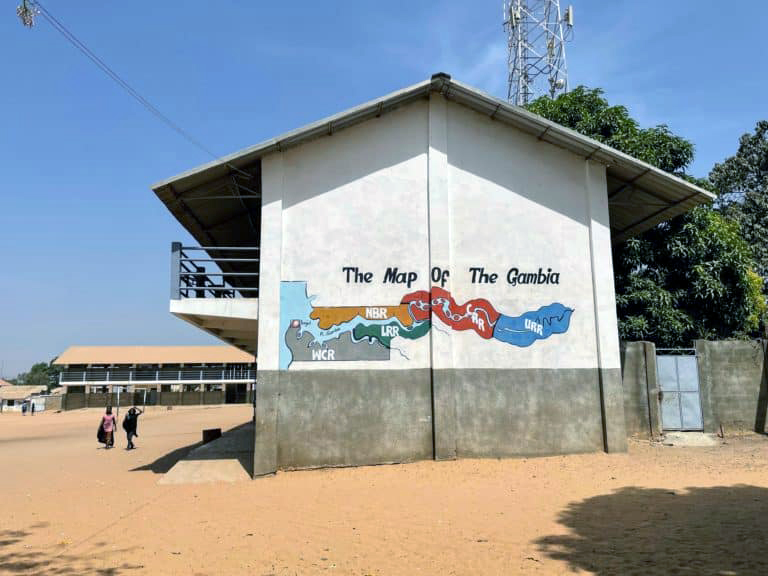
Education in the Gambia: Planning for efficiency, equity and accessibility
The Gambia recognizes the role of education in national development and has prioritized its improvement for many years. In its Vision 2020 policy adopted before the turn of the millennium, the Gambia prioritized healthcare, education and other social services to boost human capital development in the country by 2020. However, a study conducted by the Gambian Ministry of Basic and Secondary Education (MoBSE) in 2013 found that the factors most reported as causes of the high out-of-school rate were the cost of access (46%) and the distance to school (15%). The costs include informal school levies and participation costs such as uniforms and accessories, and lunch.
In its response to these challenges, the government implemented a phased abolition of fees in basic and secondary schools to foster free basic education throughout the country between 2013 and 2015. This was aimed at addressing some fundamentals like the basic school enrollment, completion and drop-out rates, which have established relationships with Early Childhood Development (ECD). Building on that Vision, the government developed the Education Sector Strategic Plan 2016 – 2030 with the theme, “Accessible, Equitable and Inclusive Quality Education for Sustainable Development” in alignment with the United Nations Sustainable Development Goals 4 (SDG4). This policy codified the specific educational objectives of the Gambia to include effective funding, equitable access and efficiency improvements.
While gains from the policy have been notable, more work was required to achieve the policy’s set objectives in areas such as input and output measurement, equitable distribution of learning materials, and targeted resource allocation. To meet the education policy’s goals, the Gambia transitioned from the traditional paper-based Education Management Information System (EMIS) to a digital system using the DHIS2 platform to leverage accurate data and achieve equitable, inclusive, and quality education. DHIS2 was adopted because of its ease of configuration, versatility and existing local capacity drawn from its use in the Gambian healthcare sector since 2009. This project was carried out as part of a multi-country DHIS2 for Education pilot coordinated by the HISP Centre at the University of Oslo and implemented by the HISP network, with financial support from GPE-KIX and Norad.
Transition to digital EMIS in the Gambia: A case of inter-agency cooperation, capacity building and cultivating a data use culture
The transition to the digital EMIS based on the DHIS2 platform resulted from extensive cooperation between government departments, agencies, NGOs and development partners such as UNESCO and implementation support from the HISP network. The process started in 2018 with an outline of the modalities for implementing a robust and efficient EMIS that would support the SDG4 goals. The plan also detailed customization of the DHIS2 platform to ensure effective data collection and utilization. Subsequently, capacity-building programs on the EMIS modules were conducted for the core team within the MoBSE. This was followed by a census of all learners in the country organized in collaboration with the Gambian Bureau of Statistics (GBoS), starting with a 200-school pilot to collect individual-level data on all children and adolescents attending primary schools in the country. The data, which is stored in DHIS2, provided insights used for educational planning and management.

Visualization of educational data at the school level before the DHIS2-based EMIS.
The underlying aim of the MoBSE is to employ data from the EMIS for the following:
- Targeted interventions. Funding is a major factor affecting education in the Gambia. For example, In 2020, the Gambia spent 2.8% of its 1.9 billion dollars GDP on education, less than the SDG4 recommended minimum of 4%. This implies the need for more efficiency in public education funding targeting the most essential needs. In this regard, the Gambian MoBSE has established a needs-driven and performance-based funding mechanism under the SIG scheme to direct available funds for the greatest impact. The Ministry uses data from the EMIS to collect and analyze indicators that help interventions such as infrastructural development including ramps and learning aids for special needs schools.
- Special needs education planning. The MoBSE has emplaced systems to help students individually depending on their specific needs. In this system, specially trained school staff (Special Needs Focal Points teams) visit the schools to evaluate the abilities of the learners and design customized plans for their education depending on their specific needs. The screening tool has been tailored to the WG/UNICEF Child Functioning Module. Where necessary as indicated by the assessment, pupils are provided with further learning needs and are evaluated to determine the best support. Previously, the data collected using this tool was aggregated for use in planning. This resulted in the loss of individualized data that could be used to plan individual-level interventions. Now, the DHIS2-based EMIS enables easy access, analysis and visualization of individual data for each school child, thereby facilitating personalized education support by the MoBSE.
- Measurement of essential indicators. Education, being a priority sector for the Government of Gambia, is aligned with the objectives of the SDG4 which is to “Ensure inclusive and equitable quality education and promote lifelong learning opportunities for all.” The digital EMIS helps the MoBSE track and report indicators that help impactful planning and course correction. Some of the tracked indicators include enrollment, completion and drop-out rates; out-of-school children numbers, distributions and correlated indicators.
Since the successful pilot implementation of the digital EMIS in the Gambia, efforts have continued to expand the system to cover all basic and secondary schools in the country, with attendant capacity-building programs conducted at the national and regional levels. Additionally, innovative features of the EMIS developed in partnership with HISP WCA and other partners under the GPE KIX-funded Data Use Innovations project are targeted at improved data use culture in the Gambian education sector.
Innovations in the Gambian DHIS2 EMIS system: Leveraging data for effective monitoring, evaluation, management support and knowledge sharing
The Gambian EMIS was primarily designed to facilitate granular data collection and use for basic education planning and management. Consequently, the HISP WCA and UiO teams collaborated with the MoBSE to implement features in the DHIS2 EMIS that support effective data collection and promote data use culture in the Gambian basic education system. Some of these innovations include the School Report Card (SRC) and the daily teacher attendance monitoring system.
School Report Card. The SRC provides a picture of the school’s performance and serves as a means by which the performance of individual schools is benchmarked against specific metrics. The aim of the SRC is to drive stakeholder and community engagement in school management through information sharing, policy dialogue and data-driven communication. These report cards are accessible to school administrators who use them to support school planning and budgeting; measure the impact of programs such as the school feeding program and the SIG thereby increasing accountability and transparency. The SRC further allows a space for parents and stakeholder groups to be involved in the schools’ performance, providing useful feedback to administrators. This also encourages peer review and healthy competition among the schools thereby driving up the quality of education across the board. Furthermore, the SRC provides a basis for discussion during the annual School Performance Monitoring Meetings (SPMMs) where stakeholders from the Ministry, civil society and development partners review individual schools and make contributions to improve the quality of education.
Daily Teacher Attendance Monitoring. A UNICEF report in Jan 2022 put the teacher absenteeism rate per primary school teacher in the Gambia at 14% per week. The report also indicated that 11% of primary school teachers arrive late or leave early weekly. This poses a challenge to quality improvement in education and sets back efforts towards the attainment of national education development objectives. The Teacher Attendance System built into the EMIS allows reporting on teacher attendance using mobile devices. Reports can also be sent to the DHIS2 instance at the regional and national levels using structured SMS where a smartphone/tablet or internet connectivity is not available.
Collaborative research and knowledge sharing. A remarkable opportunity being leveraged through the Gambian EMIS project is the collaboration between the MoBSE and partners including the University of Oslo (UiO), University of the Gambia and HISP groups for research and knowledge sharing. Under the Education for Data Use (EDU) initiative of the Department of Informatics at UiO, which leads the research efforts, researchers and students from the universities and implementing partners collaborate to find answers to questions that enhance decentralized education information use based on international data standards. The group also continues to work with the MoBSE to identify best practices in education data utilization at all levels. By working together with HISP groups in Uganda, West and Central Africa, the consortium of research and implementing partners facilitates knowledge sharing across many countries, and contributes to strengthening quality and equitable education through decentralized access to actionable education data and promotion of best practices.
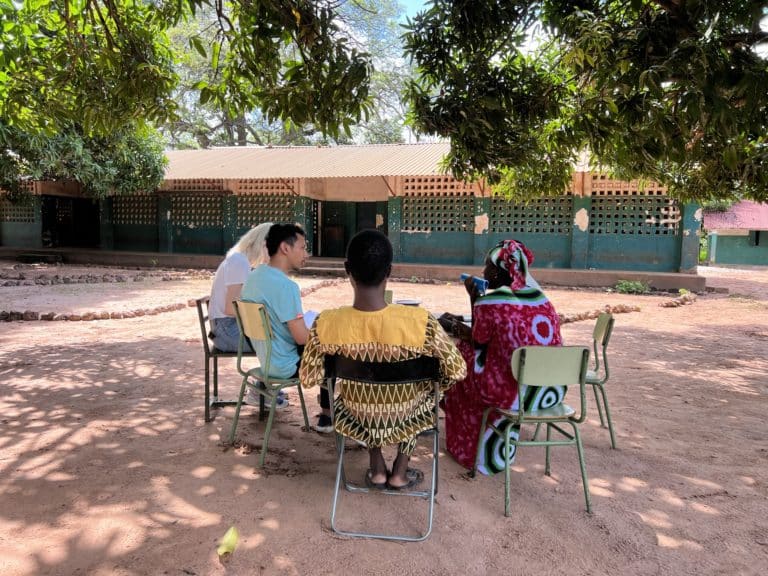
MoBSE PhD candidate and Master’s students from UiO discussing challenges related to HR data at the school level.
The bigger picture: Building a continent-wide data-driven system for education improvement in Africa through cooperation, peer review and partnerships
Education in Africa has witnessed significant gains, with enrollment in basic education at an all-time high of 80% across the continent as of 2022. Nevertheless, many reforms are still necessary to achieve the SDG4 goals in each country. The prevailing challenges to education on the continent include high numbers of out-of-school children, high drop-out rates, poor quality education and a lack of equity in education access, particularly for girls. Countries on the continent have taken steps to improve educational outcomes by improving funding, forging partnerships and implementing reforms. One of the reforms gaining traction on the continent is the implantation of digital EMIS to enhance data collection and use for planning.
The Gambia has become a point of reference for the DHIS2-based EMIS implementation on the continent. The 2022 DHIS2 for Education Academy in Banjul — with participation by government ministries, the Association for the Development of Education in Africa (ADEA), the African Union Pan-African Institute for Education for Development (AU-IPED), UNESCO, Norad, the Global Partnership for Education (GPE), UNESCO, UNICEF, other NGOs and HISP groups — has resulted in greater cooperation among development partners, highlighted by the joint communique signed by all participants. This statement recognized the importance of data in fostering evidence-based policy formulation, planning, M&E, and committed the participants to promote continent-wide adoption of DHIS2 for digital EMIS.
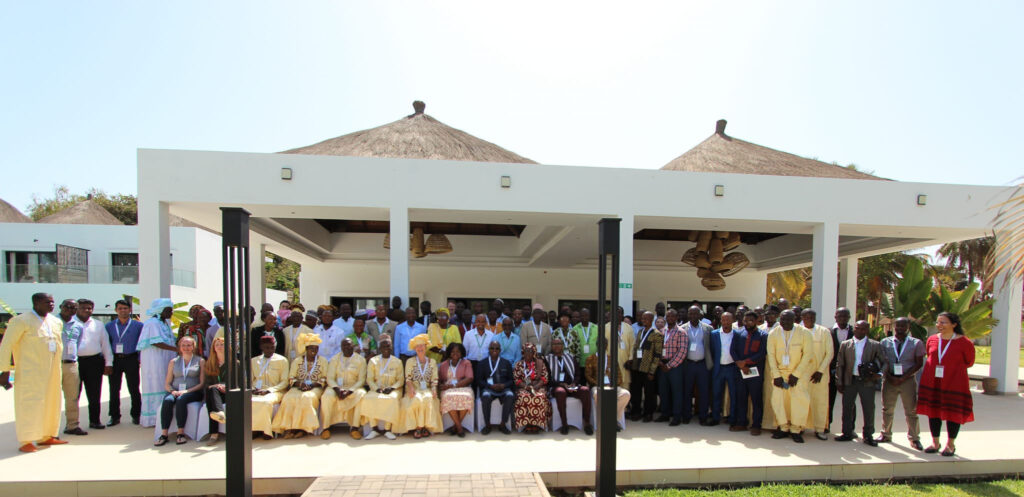
Participants at the 2022 DHIS2 for Education Academy in Banjul, the Gambia.
Following the Academy in Banjul, the AU-IPED is leading discussions on the possibility of adopting DHIS2 as the platform as a continental EMIS. This is premised on the capabilities of DHIS2 to support multi-level data use, its ease of integration and existing technical capacity in many countries on the continent that have been using the platform in healthcare for many years.
Furthermore, the HISP network across Africa plays a critical role in facilitating greater collaborations among countries implementing EMIS through knowledge transfer and technical support. A unified standard platform would also foster peer review as demonstrated in the Gambia and Uganda, where EMIS features and data use examples are giving inspiration to new country implementations; testifying to growing cooperation and information sharing. The increased adoption of DHIS2-based EMIS systems has seen several successes, including new implementations in Mozambique, Togo and eSwatini.


